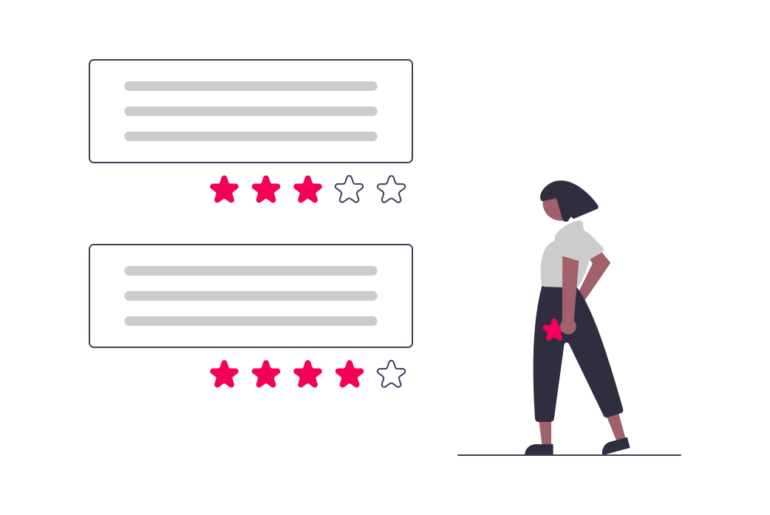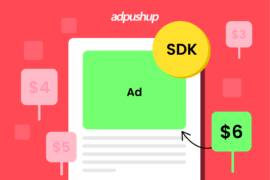If you’re from the digital advertising ecosystem, you must have heard of ‘Better Ads’ and the ‘Acceptable Ads’. Both are standard terms in the ad-tech industry. Both are especially critical for the business dealing with ad blockers. But both of the terms exist for common goals. Still, there are a few differences between them. Let’s understand the things you need to know about Acceptable Ads and Better Ads.
What are Acceptable Ads?
Acceptable Ads work on a set criterion that enables brands to reach publishers and ad-blocking users; and deliver respectful, non-intrusive and relevant ads to those users. So, the idea of Acceptable Ads is to protect the user experience for online ads and ensure that publishers can monetize their ad traffic.
What are Better Ads?
On the other hand, Better Ads delivers the best user experience with online ads. The idea behind Better Ads is extensive user research about the ad formats, and ad experiences that consumers think are the most annoying and disruptive.
Acceptable Ads vs. Better Ads
Acceptable Ads Standard works on criteria for placing ads on a website and is intended to stop ads from being intrusive and annoying. The Better Ads Standards are to identify and fix annoying and disruptive ad experiences. Despite sharing the common goal of promoting better user experiences, both the ad standards have different purposes; here are some of the differences:

What is the Process Behind the Ads Standards?
Both Acceptable Ads and Better Ads serve specific criteria for publishers. The idea was to find out how to improve online advertising formats so that digital publishers can also monetize and grow their business.
Let’s understand the process behind both types of ad standards:
Acceptable Ads Standards
According to Eyeo, which acts on behalf of the parent company of AdBlock and Adblock Plus extensions, every online ad has to comply with the Acceptable Ads Standard, and advertisers cannot avoid the criteria. The process of the Acceptable Ads Committee works by enabling the publishers and ad-tech providers to enforce compliance with the set standards.
The criterion for online ad publishers and advertisers is based on the following guidelines:
- The placement of ads must not annoy or disrupt the user’s experience. The online ads should be placed above, below, or beside the main content.
- The Ad content should be clearly labelled and comply with size and format limitations depending on the position.
- Ads should be well distinguishable and recognizable from other content on the website.
- Text ads with excessive use of colours or other elements are not permitted.
- Ads on mobile screens should follow size restrictions and must not occupy more than 50% of the visible portion of the webpage.
- Sticky Ads must follow a maximum height restriction of 75px.
- Ads with animations must comply with the LEAN standard for animations and should also have a close button or some other closing mechanism.
Better Ads Standards
For publishers, Better Ads Standards aim to follow the best ad practices and deliver a better user experience. The Coalition, a non-profit consortium, also runs a Better Ads Experience Program, which invites publishers to participate and get certification from Better Ads Standards for following the best practices.
Better Ads Standards encourage online publishers and advertisers to assess their existing ad practices and improve their user’s experience by complying with the standards.
The Coalition also decided to stop working with the publishers who aren’t following Better Ads Standards. Many publishers and SSPs list Better Ads as a mandatory requirement in the ad approval process.
Additionally, the Better Ads Standards also apply to the Chrome browser to filter annoying ads or completely block all the disruptive ads on a website that does not follow the ads standards.
According to a survey by Coalition in 2017, around 66,000 users worldwide were surveyed. The Better Ads Standards came to identify four intrusive ad formats for desktop users and eight for mobile users.
These would include the following for desktop users:
- Pop-up ads
- Auto-playing video ads with sounds
- Prestitial countdown ads
- Large sticky ads
For mobile ads, the following are most intrusive:
- Pop-up ads
- Prestitial countdown ads
- Ad density that’s higher than 30%
- Flashing, animated ads
- Auto-playing video ads with sound
- Postitial countdown ads
- Full-screen scroll over ads
- Large sticky ads
These ad formats fall into annoying ads and are considered the least preferred among all users. So, publishers in the ad-tech industry are encouraged to avoid these ads as much as possible.
What is the Main Difference in Approach?
The main difference between the two Ads Standards was identified by companies and businesses involved in the ad-tech, who researched which ad formats to avoid to reduce the number of ad blockers.
The Acceptable Ads Standards were to establish the ad formats that users find acceptable instead of avoiding ad formats that encourage users to install ad blockers. Adblock Plus enforces the Acceptable Ads Standards. On the other hand, Google enforces the Better Ads Standards.
The Acceptable Ads Standards are more stringent in blocking the ads of any party who refuses to follow the standards. It is the one thing publishers should be aware of for making the ad format experience better overall.
Wrapping Up
For a publisher, user experience is the most important criterion. And revenue is another factor to consider when deciding between these two ad standards. So when it comes to figuring out the Acceptable Ad Standard for revenue gain and monetization, they provide higher average revenue per visitor, reliability, and predictable revenue diversification. While Better Ads Standards are most likely to drive consumers to install ad blockers.
So, for publishers looking to decide between Acceptable Ads and Better Ads for their visitors, AdPushup can quickly help you set up an ad-tech experience that meets all major ad quality standards.
FAQ
These ads aren’t annoying, disruptive, or intrusive and will never include things like pop-ups, autoplay audio ads, or other annoying ads. To make an ad to be an “Acceptable Ad”, it must adhere to standards that have been set forth by the Acceptable Ads Committee.
Many business websites cannot work without ads. Acceptable Ads provide the website owners with a way to use ads to generate revenue and eliminate the need to install an ad blocker in the first place.
Better Ads is more like a voluntary approach where the publishers in the ad tech industry can choose not to follow the Better Ads Standards. Whereas, the Acceptable Ads Committee follows a more strict and forceful approach to block the ads that don’t follow the standards.

Shubham is a digital marketer with rich experience working in the advertisement technology industry. He has vast experience in the programmatic industry, driving business strategy and scaling functions including but not limited to growth and marketing, Operations, process optimization, and Sales.








